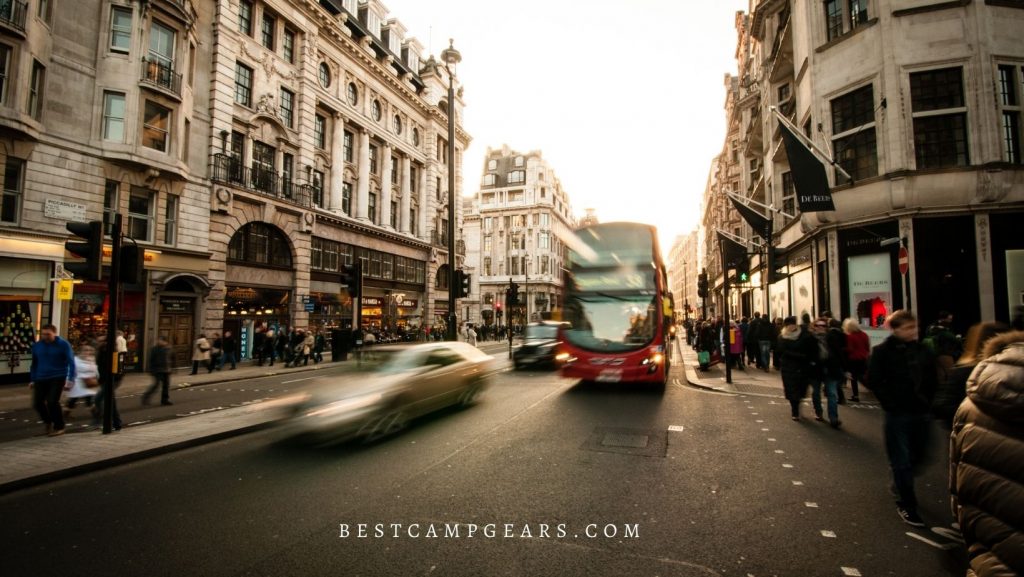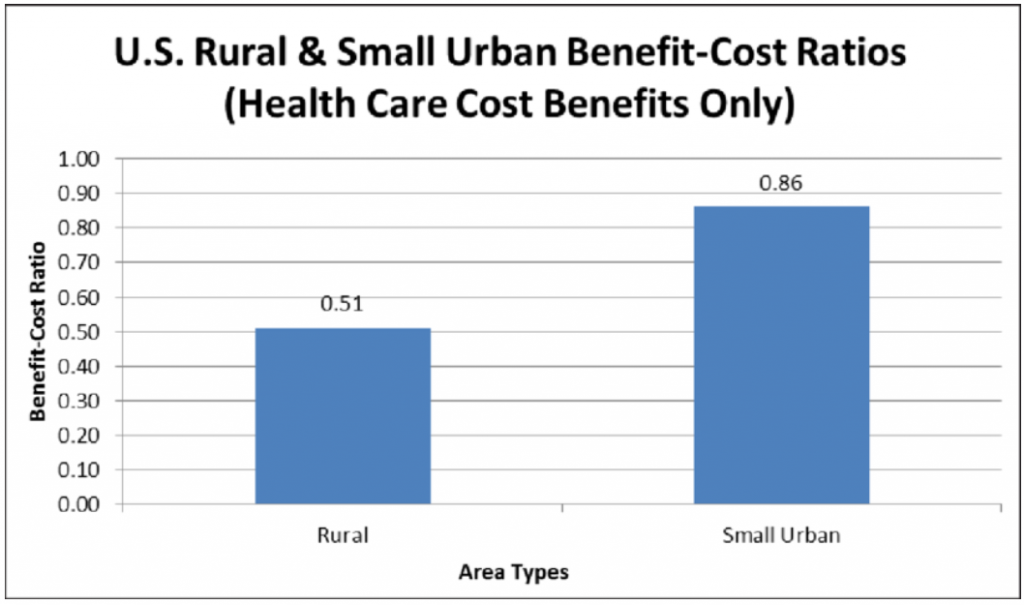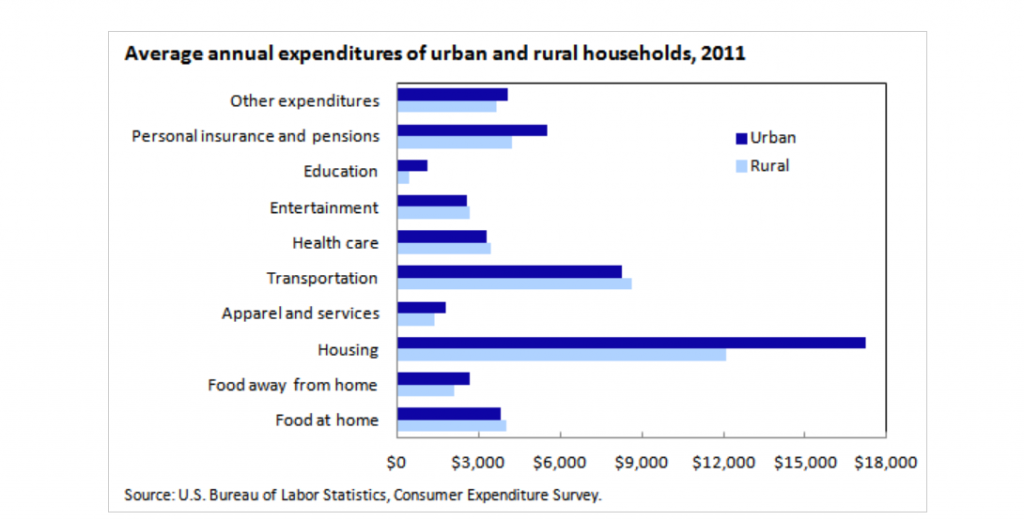
In the vast tapestry of travel, the contrasting landscapes of rural and urban destinations stand out, each offering a unique palette of experiences. On one hand, urban travel immerses us in a whirlwind of lights, sounds, and unceasing motion, showcasing the architectural marvels of humanity and the convergence of cultures. Rural travel, on the contrary, whispers the tales of the land, its natural splendor, and the traditions deeply rooted in the rhythms of nature. As we embark on this exploratory journey together, you’ll uncover the nuanced differences between these two settings, giving you a comprehensive understanding of what truly sets them apart. Ready to traverse the bustling city lanes and the serene countryside trails? Let’s dive into the captivating dichotomy of rural versus urban travel.

How does rural travel differ from urban travel?
Historical Context:
Tracing the annals of history, one discovers that travel, in both urban and rural settings, has undergone transformative shifts. In ancient times, rural travel was primarily necessitated by trade, agriculture, or pilgrimage. Meandering paths through forests and over hills connected distant villages, with journeys often being long and arduous. Urban travel, conversely, had its nascent roots in the establishment of early city-states, where intra-city movement was largely pedestrian, aided occasionally by animal-drawn vehicles.
With the dawn of industrialization in the 18th and 19th centuries, urban centers became the heartbeats of nations, pulsating with innovations. The steam engine, and subsequently the internal combustion engine, revolutionized urban mobility. Trains, trams, and buses began crisscrossing cities, reducing travel times and making daily commutes easier. Infrastructure saw massive upgrades, with cobblestone streets giving way to asphalt, supporting an ever-increasing volume of vehicular traffic.
Rural areas, while not untouched by these advancements, witnessed a more gradual transformation. The spread of railways did connect them to urban centers, but the internal road networks remained less developed for longer durations. With modernization, however, came better roads, and motorized vehicles became more commonplace, even in the hinterlands.
Yet, the impacts of industrialization and modernization were not solely infrastructural. Urban areas became hubs of rapid information exchange and economic opportunities, often drawing populations from rural areas and thereby influencing travel patterns. Rural travel evolved too, shifting from being purely functional to also encompassing leisurely pursuits, as city dwellers began seeking retreats in the countryside to escape urban chaos.
In essence, the metamorphosis of travel in both terrains has been shaped significantly by technological innovations and socio-economic shifts, each influencing and reflecting the spirit of their respective times.
Table of Contents

Modes of Transport:
The way we traverse spaces is not just a reflection of technological advancements but also the character and demands of the regions we inhabit. The modes of transport, in both urban and rural contexts, exhibit this vivid distinction.
Urban Areas:
Urban centers, with their dense populations and bustling activity, necessitate efficient, rapid, and often high-capacity modes of transportation.
Subways and Metros: These underground or elevated rail systems form the arteries of many major cities worldwide, offering a fast and congestion-free means to cover vast distances.
Buses: From double-deckers in London to the colorful Jeeps in the Philippines, buses provide an accessible and often affordable way to traverse cities.
Taxis and Rideshares: Offering door-to-door convenience, taxis have been a staple in urban transport for decades. With the digital age, rideshares like Uber and Lyft have further democratized this mode, making it more accessible and varied in options.
Bicycles and Bike Shares: With growing environmental consciousness and the need for short-distance mobility solutions, bicycles have made a comeback. Modern cities are incorporating bike lanes, and bike-sharing programs are proliferating, emphasizing eco-friendly commuting.
Other Modes: Trams, ferries, monorails, and even pedestrian-only zones in some city centers, contribute to the varied transportation palette of urban regions.
Rural Regions:
Rural areas, with their expansive landscapes and dispersed populations, have transportation modes that are markedly different.
Personal Cars: Given the vast distances and often infrequent public transport options, personal cars are dominant in rural regions. They offer flexibility, allowing individuals to traverse irregular terrains and reach remote areas.
Walking: In many rural settings, especially in developing countries, walking remains a primary means of transport, especially for short distances within a village or between nearby settlements.
Hitchhiking: In some rural communities, where public transport is scarce and personal vehicles might be a luxury, hitchhiking becomes a communal way of getting around.
Occasional Buses: While not as frequent as their urban counterparts, buses in rural regions play a vital role. They connect villages to towns, marketplaces, or even distant cities.
Animal-Drawn Vehicles: In certain rural areas, especially where modern infrastructure is yet to make inroads, horse-drawn carts, bullock carts, or even sleds in snowy regions, remain in use.
In sum, the transportation choices in urban and rural areas reflect the inherent differences in pace, infrastructure, and needs of these regions. They are emblematic of the underlying rhythms that dictate life in these contrasting landscapes.
Infrastructure and Accessibility
The very skeleton upon which travel and mobility rely, infrastructure plays a pivotal role in dictating the ease and manner in which we move. The disparity in infrastructure development between urban and rural areas has profound effects on accessibility and the overall quality of life in these regions.
Urban Centers:
The dynamism and rapid growth of urban areas have necessitated the development of robust infrastructure networks to cater to rising populations and their demands.
Roads: Cities and urban centres boast well-laid roads, often segmented into highways, arterial roads, sub-arterial roads, and lanes. These roads usually have clear demarcations, traffic signals, pedestrian pathways, and sometimes even dedicated bicycle lanes.
Public Transport Systems: Infrastructure for public transportation in cities is extensive. This includes bus terminals, subway or metro stations, tram lines, and even waterways for ferries in coastal cities. Rapid transit systems often get priority, with cities around the world developing metro rail systems underground or elevated to bypass road congestion.
Amenities: Modern urban areas come equipped with well-lit streets, signages, public restrooms, waiting areas, parking spaces, and intermodal transport hubs where different modes of transport converge for smooth passenger transfer.
Rural Areas: The sprawling nature of rural regions, combined with a lower population density, often results in challenges related to infrastructure development and accessibility.
Fewer Paved Roads: Many rural areas, especially in developing nations, lack tarred or asphalt roads. Instead, they might have gravel, dirt, or mud paths, which can become particularly challenging to navigate during adverse weather conditions like heavy rains.
Limited Public Transport: Due to lower population density and less demand, public transport services might be infrequent. The lack of a proper schedule or even unpredictability in timings can pose challenges.
Isolation: Some remote rural areas might be cut off during certain seasons due to floods, snow, or lack of passable roads. This makes accessibility a significant concern, often necessitating reliance on unconventional means like boats, animals, or foot.
Basic Amenities: Infrastructure amenities we take for granted in urban settings, such as street lights or signages, might be absent or rudimentary in rural regions. This can make travel during non-daylight hours challenging or even risky.
In conclusion, while urban centers often bask in the benefits of modern infrastructure, making travel and accessibility relatively seamless, rural areas grapple with a set of inherent challenges. Addressing these disparities is not just a matter of equity but is crucial for the holistic development and integration of a nation’s fabric.
Travel Experience and Ambiance

Travel Experience and Ambiance:
Every journey, depending on its backdrop, carries with it a distinct flavour and ambience. Urban and rural travels, due to their inherent characteristics, offer contrasting sensory experiences that imprint vivid memories on the traveller.
Urban Hustle and Bustle:
Navigating through urban landscapes is an immersion into a world of ceaseless activity, a sensory overload that can be both exhilarating and overwhelming.
Traffic: The constant hum of cars, buses, motorcycles, and other vehicles can be the defining soundtrack of many urban centres. Traffic jams, often a bane of city-dwellers, add to the experience, requiring patience and sometimes strategic planning.
Noise: Beyond the vehicular sounds, cities resonate with a plethora of noises: hawking street vendors, blaring music from storefronts, distant sirens, chatter of crowded sidewalks, and more.
Tall Buildings: The vertical rise of skyscrapers, office towers, and residential blocks shape the urban skyline, often blocking out the horizon and casting their long shadows on the streets below.
Lights: An urban night is rarely dark. Neon signs, streetlights, lit-up billboards, and the glow from high-rise windows ensure the city remains alive and vibrant even after sunset.
Diversity of Faces: One of the subtle yet profound aspects of urban travel is the sheer diversity of people – a cosmopolitan mix of cultures, languages, and stories, all converging in one place.
Rural Tranquility:
Journeying through the countryside is like a gentle lullaby for the soul, a serene escape from the frenetic pace of urban life.
Scenic Routes: Winding roads that trace along rivers, through forests, or over undulating hills can be therapeutic. Every turn might present a new vista, from golden wheat fields to the sun setting behind a distant mountain.
Fewer People: The sparse population means fewer crowds. It’s easier to find a solitary spot, a quiet nook by a stream, or an untouched meadow to lay down and gaze at the clouds.
Open Landscapes: Expansive views are a hallmark of rural travel. Whether it’s the vastness of a desert, the green expanse of farmlands, or the dramatic coastline, the horizons beckon with their limitless beauty.
Wildlife Encounters: Unlike urban settings where wildlife might be limited to pigeons or squirrels, rural areas offer the chance to spot a variety of animals. From birds of prey soaring in the sky to deer grazing at dawn, nature’s wonders are on full display.
Sounds of Nature: The ambience of rural areas is often accentuated by the chorus of crickets, the rustle of leaves, the babbling of brooks, and the distant call of animals, bringing travellers closer to the natural world.
In wrapping, while the urban journey stimulates with its vigour and vitality, rural travel soothes with its simplicity and serenity. Both experiences, in their own right, are invaluable, offering glimpses into the multifaceted tapestry of our world.

Safety and Precautions:
Whether navigating the vibrant streets of a bustling city or traversing the quiet byways of the countryside, safety remains paramount. Both urban and rural settings come with their unique set of challenges and precautions travellers should be aware of.
Urban Settings:
The sheer density and diversity of urban areas naturally bring about certain safety concerns that travellers must keep in mind.
Pickpocketing and Petty Crimes: Busy urban centres, especially in tourist-heavy areas, can be hotspots for pickpockets and petty thieves. Travellers are advised to keep their belongings secure, avoid displaying expensive items openly, and be wary in crowded places.
Busy Crossings: With the hustle and bustle of city traffic, crossing roads can be perilous. It’s crucial to use designated pedestrian crossings, wait for signals, and always be vigilant, especially in cities where traffic can be unpredictable.
Scams: Tourist areas in cities can sometimes be rife with scams. From overpriced souvenirs to misleading tour offers, it’s essential to do prior research, be cautious, and avoid deals that seem too good to be true.
Night Safety: While urban areas are generally well-lit, certain parts of cities can be unsafe at night. Sticking to well-trodden paths, avoiding poorly-lit alleys, and being cautious in unfamiliar neighbourhoods is recommended.
Rural Settings: The serenity of rural areas often masks some inherent risks and challenges that travellers should prepare for.
Wildlife Encounters: Especially in regions known for their natural habitats, encounters with wildlife, from snakes to larger predators, can pose risks. Staying on marked paths, avoiding wandering at night, and being aware of local wildlife are necessary precautions.
Fewer Amenities on Long Stretches: Rural roads can sometimes go on for miles without gas stations, restaurants, or rest stops. Planning ahead, carrying camping essentials like water and snacks, and ensuring your vehicle is in good condition is crucial.
Limited Healthcare Facilities: In case of medical emergencies, the proximity to healthcare centers in rural regions can be a concern. It’s always wise to carry a basic first-aid kit, be aware of the nearest medical facilities, and have a means of communication.
Unpredictable Terrain: Rural areas, especially those less frequented by tourists, might have unpredictable or challenging terrains. This could range from muddy paths after rains to rocky trails on hills. Suitable footwear, awareness of weather conditions, and local guidance can be invaluable.
Local Customs and Etiquette: While this can apply to both urban and rural settings, rural areas often have deep-rooted traditions and customs. Respecting them, being aware of any taboos, and interacting politely with locals enriches the travel experience and ensures a harmonious relationship.
In essence, while the essence of travel is exploration and enjoyment, being well-informed and prepared for the unique challenges of urban and rural settings guarantees a memorable and safe journey.

Cultural Experience:
Culture, a complex tapestry woven through time, is most vividly experienced when one travels. Both urban and rural landscapes offer enriching cultural insights, albeit in contrasting ways.
Urban Areas:
Modern urban centres, due to migration and globalization, have transformed into melting pots of diverse cultures.
Multicultural Hubs: Cities often house people from varied ethnicities, backgrounds, and countries. This mosaic of diversity is evident in neighbourhoods that might feel distinctly different from one another, each offering its unique cultural flavour.
Blend of Traditions: Festivals in urban settings are eclectic events. For instance, while you might witness a traditional Christmas market in one part of the city, another might be hosting a Diwali celebration or a Lunar New Year parade.
Varied Food Options: The culinary scene in cities is a testament to their multicultural essence. From upscale restaurants offering global cuisines to street stalls dishing out fusion foods, the gastronomic experiences are limitless.
Art and Entertainment: Urban areas are often the epicentres of artistic and entertainment endeavours. Modern art galleries coexist with ancient museums, and theatres might showcase both traditional plays and avant-garde performances.
Fashion and Trends: Cities are the birthplaces of many global fashion and lifestyle trends. The blend of cultures often results in unique fashion statements that can be seen in the streets, markets, and boutiques.
Rural Areas: The countryside, relatively untouched by the rapid pace of globalization, offers a deeper dive into the authentic and indigenous aspects of culture.
Authentic Local Traditions: Rural regions often preserve age-old customs and practices. Whether it’s a traditional dance around a bonfire or a village fair that has been celebrated for centuries, the experiences are raw and genuine.
Community-based Experiences: The sense of community in rural areas is profound. Travellers might find themselves invited to a local’s home for a meal, participate in communal farming, or join in village celebrations.
Indigenous and Regional Foods: Rural culinary delights are often closely tied to the land. Ingredients are locally sourced, and dishes passed down through generations, are a reflection of the region’s history, climate, and traditions.
Crafts and Handiwork: Rural areas are often the bastions of traditional crafts. From pottery to weaving, the hand-made artefacts not only offer unique souvenirs but also a glimpse into the skills and stories of the artisans.
Oral Histories and Folktales: Unlike the written and digital documentation prevalent in cities, rural regions often carry their history and myths through oral traditions. Listening to an elder narrate tales of yore by a fireside can be an unparalleled experience.
In summary, while urban settings offer a vibrant blend of cultures, rural landscapes provide a more intimate and authentic cultural immersion. Both, however, are invaluable in understanding the rich tapestry of human civilization and its myriad expressions.
Cost Implications:

Environmental Impact:

Travel inherently carries an environmental footprint. The sprawling urban landscapes and untouched rural terrains, while offering distinct experiences, also have varied impacts on our planet. Delving deeper:
Urban Travel:
Cities, with their dense populations and industrial activities, are significant contributors to environmental issues, and travel within these areas can exacerbate some of these impacts.
Air Pollution: The dense traffic in urban areas leads to substantial emissions of greenhouse gases and pollutants. While public transport mitigates this to some extent, the sheer volume of vehicles, including cars, buses, and taxis, can lead to deteriorating air quality.
Waste Production: Tourist-heavy urban areas often witness increased waste production, be it from street food vendors, hotels, or shopping centers. Not all cities have efficient waste management systems, leading to issues like landfills and improper disposal.
Resource Overuse: Popular urban destinations can sometimes face over-tourism, leading to strain on local resources like water and energy. This can affect the local community’s quality of life and lead to faster depletion of resources.
Noise Pollution: The constant hum of traffic, combined with activities like construction or entertainment events, results in significant noise pollution in cities.
Heat Islands: Urban areas, due to their concrete structures and lack of green spaces, can become heat islands, trapping heat and increasing local temperatures. This phenomenon is exacerbated with increased travel and construction to accommodate tourists.
Rural Travel: While rural areas often symbolize pristine environments, travel to these regions brings both benefits and challenges.
Benefits to Local Ecosystem: Responsible rural tourism can bolster conservation efforts. Funds from eco-tourism can be channeled into preserving local habitats, wildlife, and natural resources.
Promotion of Sustainable Practices: Rural travel often emphasizes sustainable practices, from organic farming to the use of renewable energy in eco-lodges, setting an example for sustainable living.
Potential Habitat Disruption: However, unchecked rural tourism can lead to habitat disruption. For instance, frequent wildlife tours can disturb animal behaviors, and setting up accommodations can encroach upon natural habitats.
Waste Management Challenges: Rural areas might not be equipped to handle the increased waste produced by tourists, especially non-biodegradable waste like plastic. Improper disposal can harm local ecosystems.
Overuse of Resources: Much like in urban areas, popular rural destinations can face the overuse of local resources. An influx of tourists can strain water supplies or lead to over-farming, affecting the local community and environment.
Carbon Footprint of Transit: Reaching remote rural destinations often involves long road trips or flights, leading to a substantial carbon footprint even before the actual rural experience begins.
In essence, while travel enriches our lives, it’s imperative to be conscious of its environmental implications. Whether urban or rural, adopting sustainable travel practices and making informed choices can mitigate adverse impacts, ensuring that the beauty and vitality of our destinations remain for future generations. Analysing various sources we made this chart.

Tourist Attractions and Activities

The choice between an urban adventure and a rural escape often boils down to the attractions and activities each setting offers. Both environments provide diverse experiences that cater to different tastes and interests.
Urban Attractions:
Cityscapes are adorned with a multitude of attractions that serve as magnets for tourists from around the globe.
Museums: From art galleries showcasing masterpieces to history museums diving into the past, urban areas house institutions that hold a treasure trove of knowledge and creativity. Famous examples include the Louvre in Paris, the British Museum in London, and the MET in New York.
Theaters and Performing Arts: Cities are the epicentres of cultural performances. Whether it’s catching a Broadway show in New York, an opera in Sydney, or a traditional Kabuki performance in Tokyo, the choices are vast.
Shopping Centers: From high-end fashion streets like the Champs-Élysées in Paris to sprawling malls in Dubai, urban centers are shoppers’ paradises, offering everything from luxury brands to quirky local crafts.
Restaurants and Nightlife: The culinary and nightlife scenes in cities are vibrant and diverse. Tourists can indulge in gourmet meals, sample street food, or dance the night away in trendy clubs.
Architectural Wonders: Many cities boast iconic architectural landmarks, be it the Eiffel Tower, the Petronas Towers, or ancient marvels like Rome’s Colosseum.
Parks and Recreational Centers: Amidst the urban hustle, many cities offer green oases, like Central Park in New York or Hyde Park in London, where visitors can relax and partake in recreational activities.
Rural Attractions:
The tranquil countryside, on the other hand, offers attractions that provide a closer bond with nature and authentic local experiences.
Nature Spots: From breathtaking mountain views to serene lakes and cascading waterfalls, rural areas provide picturesque landscapes that are a treat for nature enthusiasts.
Local Festivals: Rural regions often host festivals that are deeply rooted in local traditions. These can range from harvest festivals to dances and rituals that have been practiced for centuries.
Traditional Workshops: Interested travelers can partake in workshops that offer insights into rural crafts, be it pottery, weaving, or traditional cooking. Such hands-on experiences provide a deep connection to the local culture.
Agricultural Experiences: Farms and vineyards often welcome tourists, allowing them to experience activities like grape picking, milking, or even spending a day as a farmer.
Wildlife and Adventure: Rural landscapes often house diverse flora and fauna. Wildlife safaris, bird-watching excursions, or trekking adventures are common attractions.
Cultural Homestays: Staying with a local family, experiencing their daily life, and indulging in traditional meals can be a transformative experience, offering genuine insights into rural lifestyles.
In summary, while urban centres captivate with their vibrant energy and array of man-made attractions, rural areas are enchant with their natural beauty and cultural depth. Depending on one’s interests, both offer unique attractions and activities that promise memorable experiences.

Conclusion
Travel, in its essence, is an exploration of the diverse tapestry that our world offers. From the pulsating heartbeats of sprawling cities to the serene whispers of the countryside, every journey, be it urban or rural, unveils a different chapter of the global story.
Urban landscapes, with their towering skyscrapers, bustling streets, and melange of cultures, epitomize the pinnacle of human creativity and ambition. These are places where history meets modernity, where every corner might house an architectural marvel or a relic from the past. The energy is palpable, with attractions ranging from world-renowned museums to vibrant nightlife, catering to an eclectic spectrum of interests.
In contrast, rural destinations offer a tranquil retreat, a return to our roots. The sprawling landscapes, dotted with nature’s wonders, tell tales of traditions and a life harmoniously woven with nature. Here, the attractions are more about immersive experiences – witnessing age-old festivals, engaging in traditional crafts, or simply soaking in the untouched beauty of Mother Earth.
However, as we traverse these diverse terrains, it’s paramount to tread with care and respect. Every cityscape has a community that calls it home, and every rural expanse has a delicate ecosystem. Our journeys should add value, not deplete. Responsible travel, understanding, and appreciation of local cultures, economies, and environments are the cornerstones of meaningful experiences.
In conclusion, whether you’re a city aficionado or a lover of the countryside, embrace each journey with an open heart. There’s beauty in the buzz of city squares just as there’s magic in the silence of rural dawns. Explore, appreciate, and respect the myriad hues of both urban and rural travels, for in doing so, you’re not just traversing distances but also broadening your horizons.
Recommendations
Every traveler is driven by unique motivations, seeking different experiences and memories. Depending on individual preferences, certain destinations might resonate more profoundly. Here’s a guide to help you make an informed choice:
Based on Preferences:
Seeking Peace and Tranquility: If your soul yearns for a break from the cacophony of daily life, rural travel is a resounding call. The serene landscapes, the rhythmic patterns of traditional life, and the unhurried pace provide the perfect setting to rejuvenate. Whether it’s a secluded cabin in the woods, a coastal village, or a mountainside retreat, the rural world offers sanctuaries of calm.
In Pursuit of Dynamic and Diverse Experiences: For those who thrive in bustling environments, drawing energy from the myriad stimuli of urban life, city travel is the go-to. From the sensory overload of Times Square to the cosmopolitan vibes of cities like Tokyo, London, or Paris, urban centers present a smorgasbord of experiences – cultural, culinary, artistic, and more.
Traveling Responsibly:
Regardless of the chosen setting, it’s imperative to be a responsible traveler. Here are some universal tips:
Understand Local Customs: Take the time to research and understand the traditions, customs, and etiquettes of the place you’re visiting. A gesture considered polite in one culture might be offensive in another.
Minimize Environmental Footprint: Opt for eco-friendly modes of transport whenever possible, reduce waste, and support accommodations and services that follow sustainable practices.
Support Local Economies: From buying souvenirs to dining, choose local vendors and artisans. This not only contributes to the community’s economy but also ensures a more authentic experience.
Limit Intrusions: In rural settings, respect the privacy of residents. In urban areas, avoid creating obstructions, especially in already crowded places.
Stay Informed and Safe: Understand the local safety landscape. While urban centres might have concerns like pickpocketing, rural areas might pose challenges related to wildlife or terrain.
Limit Waste: Carry reusable water bottles, bags, and avoid single-use plastics. In rural areas, where waste management might be challenging, ensure you leave no trace.
Engage and Interact: Travel is as much about places as it is about people. Engage with locals, be it city dwellers or rural communities. Their stories and insights enrich the travel experience manifold.
In essence, travel is a deeply personal journey. Whether you find solace in the hum of city life or the lullabies of the countryside, the world is a canvas of experiences waiting to be explored. Choose based on your heart’s calling but tread with respect, understanding, and responsibility. Happy travels!
This outline provides a comprehensive view of the differences between rural and urban travel, allowing for an in-depth article that touches on multiple facets of the topic.
Mustakim Hasan
As an engineer with a keen eye for detail, I combines their technical expertise with a fervent passion for the outdoors. At bestcampgears.com, I share in-depth reviews on the latest camping, outdoor, and sports products, offering readers valuable insights and reliable recommendations. Drawing from personal experiences and a love for nature, I also provides practical tips, tricks, and guidance to enhance your outdoor adventures. Whether you're a seasoned camper or a budding outdoor enthusiast, Bestcampgears's blog is your go-to resource for all things camping and outdoors.


The Ultimate Guide to TIMBER RIDGE XXL Upgraded Oversized Directors Chairs



ALPHA CAMP Oversized Camping Folding Chair: The Ultimate Heavy-Duty Outdoor Companion


